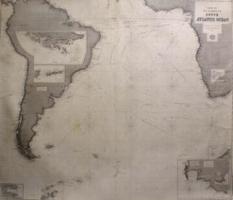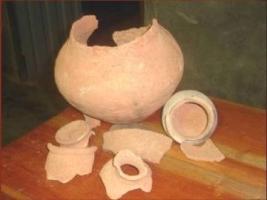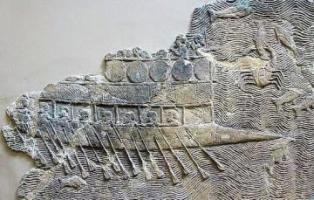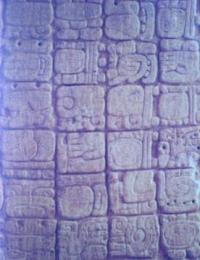Copy Link
Add to Bookmark
Report
dictyNews Volume 38 Number 04

dictyNews
Electronic Edition
Volume 38, number 4
February 3, 2012
Please submit abstracts of your papers as soon as they have been
accepted for publication by sending them to dicty@northwestern.edu
or by using the form at
http://dictybase.org/db/cgi-bin/dictyBase/abstract_submit.
Back issues of dictyNews, the Dicty Reference database and other
useful information is available at dictyBase - http://dictybase.org.
Follow dictyBase on twitter:
http://twitter.com/dictybase
=========
Abstracts
=========
Evolution of self-organisation in Dictyostelia by adaptation of a
non-selective phosphodiesterase and a matrix component for
regulated cAMP degradation
Yoshinori Kawabe, Karin E. Weening, Jacques Marquay-Markiewicz
and Pauline Schaap*
College of Life Sciences, University of Dundee, Dundee DD15EH, UK
Development, in press
Dictyostelium discoideum amoebas coordinate aggregation and
morphogenesis by secreting cAMP pulses that propagate as waves
through fields of cells and multicellular structures. To retrace how this
mechanism for self-organisation evolved, we studied the origin of the
cAMP phosphodiesterase PdsA and its inhibitor PdiA, which are
essential for cAMP wave propagation. D.discoideum and other species
that use cAMP to aggregate reside in group 4 of the four major groups
of Dictyostelia. We found that groups 1-3 express a non-specific, low
affinity ortholog of PdsA, which gained cAMP selectivity and increased
200-fold in affinity in group 4. A low affinity group 3 PdsA only partially
restored aggregation of a D.discoideum pdsA null mutant, but was more
effective at restoring fruiting body morphogenesis. Deletion of a group 2
PdsA gene resulted in disruption of fruiting body morphogenesis, but
left aggregation unaffected. Together, these results show that groups
1-3 use a low affinity PdsA for morphogenesis that is neither suited
nor required for aggregation. PdiA belongs to a family of matrix proteins
that are present in all Dictyostelia and consist mainly of cysteine-rich
repeats. However, in its current form with several extensively modified
repeats, PdiA is only present in the group 4. PdiA is essential for
initiating spiral cAMP waves, which, by organizing large territories,
generate the large fruiting structures that characterize group 4. We
conclude that efficient cAMP-mediated aggregation in group 4 evolved
by recruitment and adaptation of a non-selective phosphodiesterase
and a matrix component into a system for regulated cAMP
degradation.
Submitted by Pauline Schaap [p.schaap@dundee.ac.uk]
--------------------------------------------------------------------------------------
Regulation of aggregate size and pattern by adenosine and caffeine
in cellular slime molds.
Jaiswal P, Soldati T, Thewes S, Baskar R.
BMC Dev Biol. 2012 Jan 23;12(1):5.
BACKGROUND: Multicellularity in cellular slime molds is achieved
by aggregation of several hundreds to thousands of cells. In the model
slime mold Dictyostelium discoideum, adenosine is known to increase
the aggregate size and its antagonist caffeine reduces the aggregate
size. However, it is not clear if the actions of adenosine and caffeine
are evolutionarily conserved among other slime molds known to use
structurally unrelated chemoattractants.
RESULTS: We have examined how the known factors affecting
aggregate size are modulated by adenosine and caffeine. Result:
Adenosine and caffeine induced the formation of large and small
aggregates respectively, in evolutionarily distinct slime molds known
to use diverse chemoattractants for their aggregation. Due to its
genetic tractability, we chose D. discoideum to further investigate the
factors affecting aggregate size. The changes in aggregate size are
caused by the effect of the compounds on several parameters such
as cell number and size, cell-cell adhesion, cAMP signal relay and
cell counting mechanisms. While some of the effects of these two
compounds are opposite to each other, interestingly, both
compounds increase the intracellular glucose level and strengthen
cell-cell adhesion. These compounds also inhibit the synthesis of
cAMP phosphodiesterase (PdsA), weakening the relay of extracellular
cAMP signal. Adenosine as well as caffeine rescue mutants impaired
in stream formation (pde4- and pdiA-) and colony size (smlA- and ctnA-)
and restore their parental aggregate size.
CONCLUSION: Adenosine increased the cell division timings thereby
making large number of cells available for aggregation and also it
marginally increased the cell size contributing to large aggregate size.
Reduced cell division rates and decreased cell size in the presence of
caffeine makes the aggregates smaller than controls. Both the
compounds altered the speed of the chemotactic amoebae causing
a variation in aggregate size. Our data strongly suggests that cytosolic
glucose and extracellular cAMP levels are the other major determinants
regulating aggregate size and pattern. Importantly, the aggregation
process is conserved among different lineages of cellular slime molds
despite using unrelated signalling molecules for aggregation.
Submitted by R. Baskar [rbaskar@IITM.AC.IN]
--------------------------------------------------------------------------------------
ZizB, a novel RacGEF regulates development, cell motility and
cytokinesis in Dictyostelium
Nicholl K. Pakes*, Douwe Veltman*, Francisco Rivero, Jamal Nasir,
Robert Insall, and Robin S.B. Williams
J. Cell Sci., in press
Dock (Dedicator of Cytokinesis) proteins represent a family of Guanine
nucleotide Exchange Factors (GEFs) that include the well studied Dock180
family and the poorly characterised zizimin family. Our current understanding
of Dock180 function is to regulate Rho small GTPases, playing a role in a
number of cell processes including cell migration, development and division.
Here, we have employed a tractable model for cell motility research,
Dictyostelium discoideum, to help elucidate the role of the related zizimin
proteins. We show that gene ablation of zizA causes no change in
development whereas ablation of zizB gives rise to an aberrant
developmental morphology and a reduction in cell directionality and velocity,
and altered cell shape. Fluorescently labeled ZizA protein associates with
the microtubule organizing centre (MTOC), whereas the ZizB protein
exhibits cortical enrichment. Overexpression of ZizB also causes an
increase in the number filopodia and a partial inhibition of cytokinesis.
Analysis of ZizB protein binding partners indicates a direct binding to Rac1a
and a range of actin-interacting proteins. In conclusion our work provides
the first insight into the molecular and cellular functions of zizimin GEF
proteins playing a role in cell movement, filopodia formation and cytokinesis.
Submitted by Robin Williams [Robin.Williams@rhul.ac.uk]
==============================================================
[End dictyNews, volume 38, number 4]


















